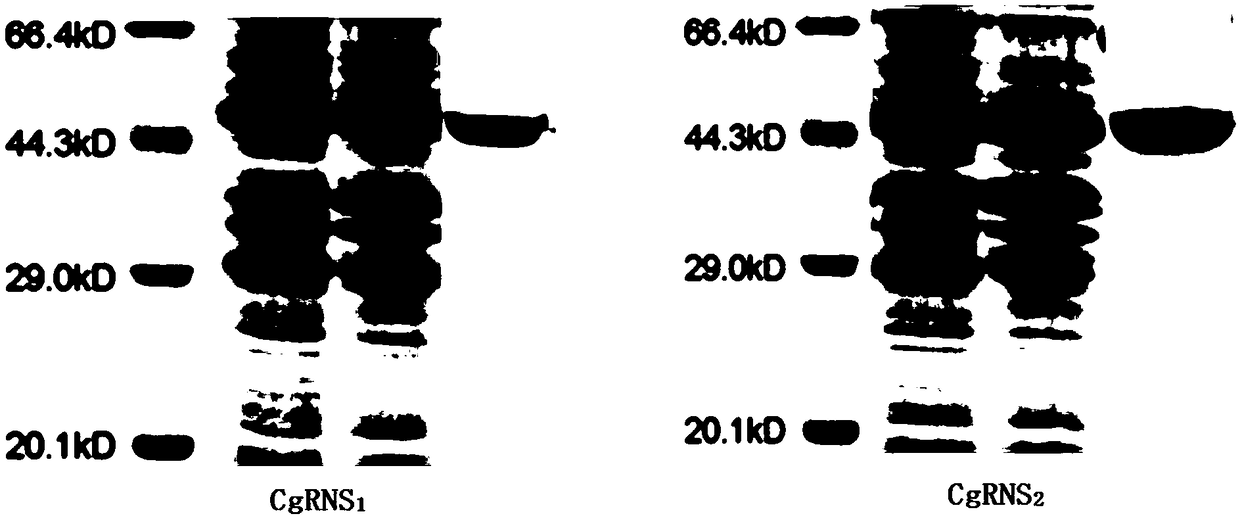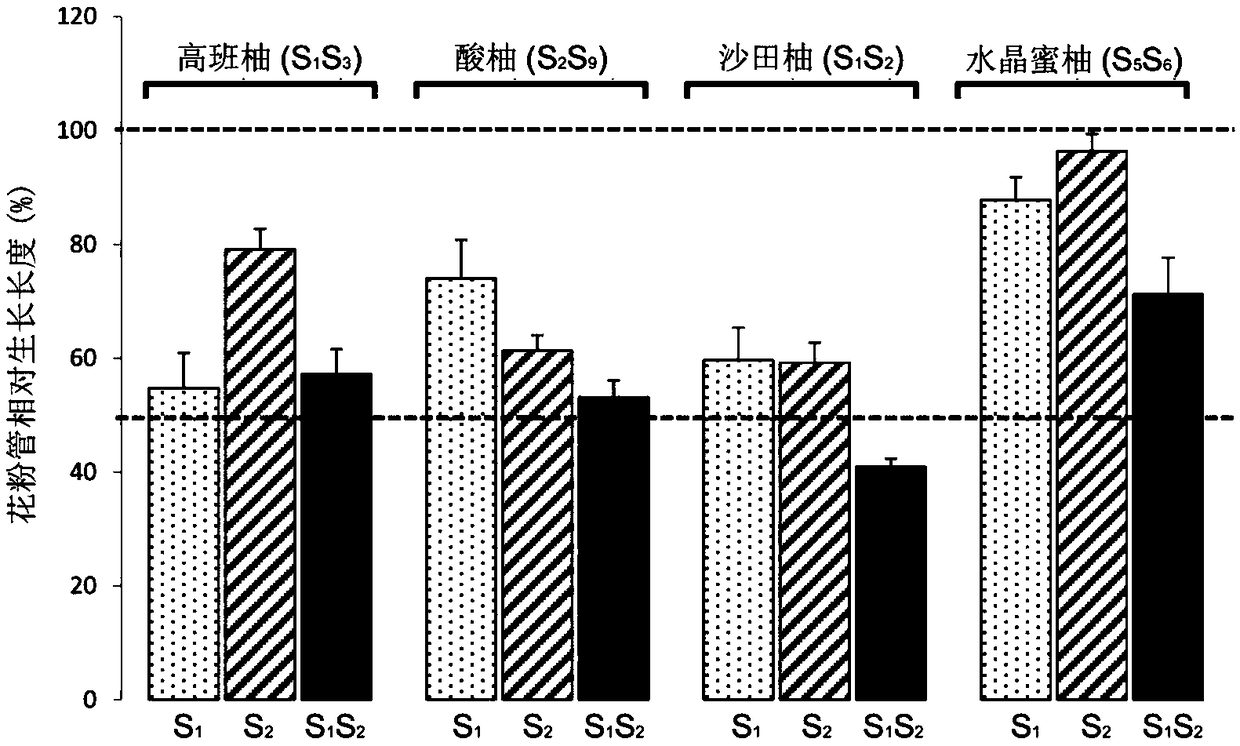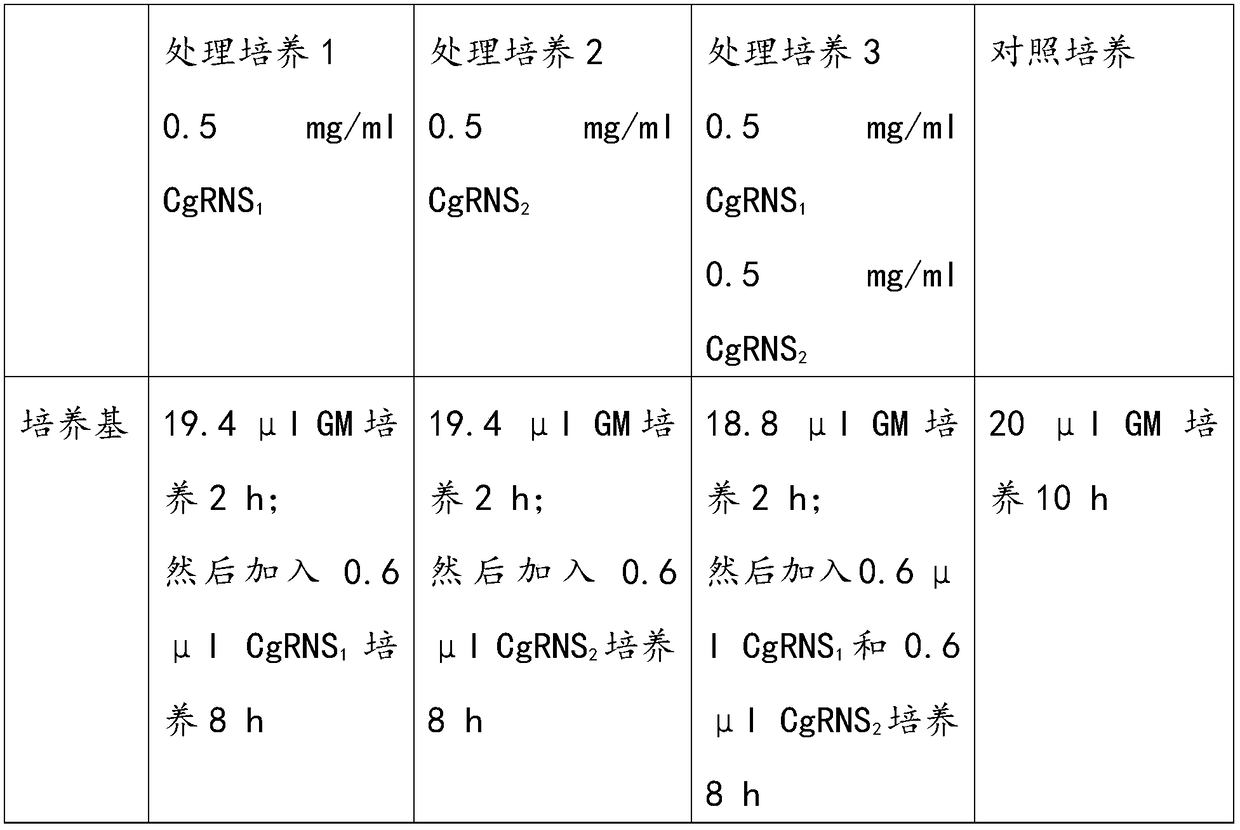Method for in-vitro verification of self-incompatibility function of S-RNase in citrus and pomelo
A citrus, in vitro technology, applied in the direction of biochemical equipment and methods, microbial measurement/inspection, etc., can solve the problem of plant loss and rejection, and achieve the effect of avoiding transgenic verification
- Summary
- Abstract
- Description
- Claims
- Application Information
AI Technical Summary
Problems solved by technology
Method used
Image
Examples
Embodiment Construction
[0033] The principles and features of the present invention are described below in conjunction with the accompanying drawings, and the examples given are only used to explain the present invention, and are not intended to limit the scope of the present invention.
[0034] 1. Shatian pomelo CgRNS 1 and CgRNS 2 expression and purification of
[0035] 1.1 Construction of expression vector
[0036] Get-CgRNS 1 and CgRNS 2 According to the amino acid sequence analysis, it was found that the first 21 amino acids were hydrophobic signal peptides. Designing primers to amplify CgRNS with truncated signal peptide using Shatian pomelo style cDNA as template 1 and CgRNS 2 gene, and add adapters with restriction sites to the primers. The final synthetic primers are as follows:
[0037] 6P-RNS 1 -F: 5'--GGGCCCCTGGGATCCAACAATTCTGGTTTTGACCAC--3' (SEQ ID NO: 1)
[0038] 6P-RNS 1 -R: 5'--GTCGACCCGGGAATTC TTAAGGCGGGGGAAAGGTA--3' (SEQ ID NO: 2)
[0039] 6P-RNS 2 -F: 5'--GGGCCCCTGGGAT...
PUM
 Login to View More
Login to View More Abstract
Description
Claims
Application Information
 Login to View More
Login to View More - R&D
- Intellectual Property
- Life Sciences
- Materials
- Tech Scout
- Unparalleled Data Quality
- Higher Quality Content
- 60% Fewer Hallucinations
Browse by: Latest US Patents, China's latest patents, Technical Efficacy Thesaurus, Application Domain, Technology Topic, Popular Technical Reports.
© 2025 PatSnap. All rights reserved.Legal|Privacy policy|Modern Slavery Act Transparency Statement|Sitemap|About US| Contact US: help@patsnap.com



